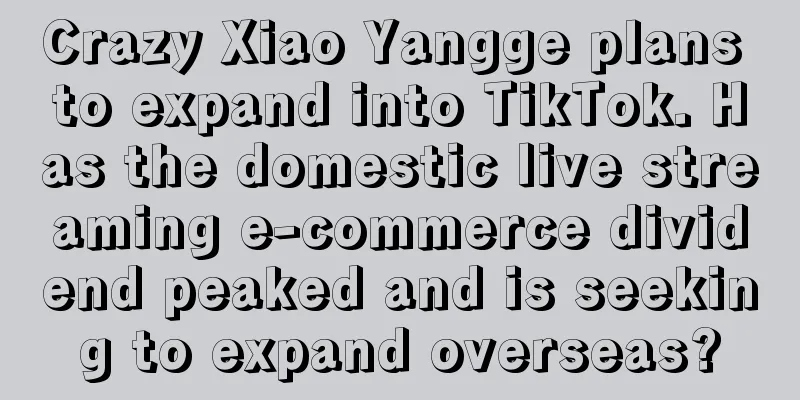Ten thousand words to tell the story of Don Quijote: The stores are super cheap, but it has been growing for 34 consecutive years, and its revenue is hundreds of billions, crushing MUJI. What did Don Quijote do right?

Don Quixote, the worst store in Japan, has become a must-see attraction when traveling to Japan. Japan has always been synonymous with refinement. Whether it is Lawson, FamilyMart, MUJI, or Uniqlo, they all give people a clean, tidy, and fresh feeling. However, a Japanese supermarket called Don Quixote does the opposite. The shelves reach the roof and are full of things from top to bottom. It is full and messy. It is known as the worst store in Japan. But for many people who visit Don Quijote, it is a "time black hole". One friend said, "Four people went there at around 9pm, and when they left after shopping, they found that it was already past 6am", and another friend said, "Every time I go in, my money and time disappear inexplicably". How can such a shabby store make people addicted? This is such a strange company. It is not only a "strange store" that makes tourists curious, but also the most profitable store in Japan. It is the only company among all 3,000 listed companies in Japan that has grown continuously for 34 years. The annual passenger flow exceeds 300 million people, the number of stores worldwide is more than 700, and the consolidated sales in fiscal year 2024 (ending June 2024) will exceed 2 trillion yen (about 100 billion yuan), which is equivalent to twice the sales of Walmart China in 2023 and 10 times the sales of 10.7 billion yuan of regional retailer Pang Donglai in 2023. It is known as the monster of the retail industry, one of the four giants of Japanese retail, and Don Quixote, which is as famous as 711, Aeon and Uniqlo. What is the secret behind Don Quixote's success? How did it achieve sales of 100 billion in the extremely involuted Japanese market? We hope to give some inspiration to Chinese retail companies through the major choices Don Quixote made at each key stage in the current competitive red ocean of the discount industry. Today, we will continue the series of "Crossing the River in Japan" and take you to learn about Don Quixote, the so-called monster in the Japanese retail industry. 01 The business prototype of Don Quixote is called Thieves Market!In 1978, Takao Yasuda started his own business and opened a grocery store called "Thieves Market". From the name Thief Market, we can see that Takao Yasuda is born with a strong sense of brand. From a brand perspective, Thief Market is a super language and also a selling point name. Simply put, super language is to graft some well-known words onto your own brand, so that consumers can easily remember and spread them, and help companies quickly form brands. For example, the well-known Wahaha, Alibaba, Xiaomi, Dayu Planning, and his later famous brand Don Quixote are all super language brand names. This type of brand name has the fastest transmission rate and the lowest transmission cost. Selling point naming means that the brand name can present its biggest feature, that is, the selling point, in the form of a brand name . The selling point brand names we are familiar with, such as Nongfu Spring, Oriental Leaves, and Nutri-Express, are all selling point naming. These selling point brand names can make the product value visible and allow consumers to perceive it in one second at the terminal . The differentiated value of the brand directly promotes consumer purchases and helps these companies save at least hundreds of millions of advertising fees. The selling point of Thief’s Market is cheapness, so cheap that it seems like stolen. Why is it called the Thieves Market? Because the goods are sold cheaply. So cheap that they seem to be stolen. Why is it so cheap? Because we are selling end-of-season goods, these end-of-season goods due to slow sales, out-of-season, or minor defects, we call them soft discounts today! Why are there so many cheap tail goods? During the oil crisis from 1974 to 1977, OPEC raised the price of crude oil from $3.011 per barrel to $10.651, causing the price of oil to more than double, triggering the most serious global economic crisis since World War II. The three-year oil crisis had a serious impact on the economies of developed countries. During this crisis, industrial production in the United States fell by 14%, and industrial production in Japan, which was even more scarce in resources, fell by more than 20%. A large number of factories closed down and a large number of workers lost their jobs. The thief market, founded in 1978, was like a scavenger in the ruins of this economic crisis, transforming the tail goods of bankrupt companies and factories into its own products. Although these products have various shortcomings, they have low prices that consumers cannot resist. In the thief market, there are a wide variety of goods but the prices are shocking. From the tail goods of big brands to daily groceries, all are labeled "super cheap". Although the sales were good, it was limited by manpower, funds, and tight supply. With the lifting of the oil crisis and the recovery of Japan's manufacturing industry, the supply began to become tight, and it was difficult for Wangpu to replicate and expand. In 1980, Takao Yasuda sold the thief market and began to focus on wholesale. Is this situation very similar to the soft discount store opening boom in China in the past few years? During the mask period, a large number of soft discount brands emerged because of blocked channels and a large number of tail goods in factories. With the lifting of masks, a large number of soft discount brands began to close stores. Like the problems encountered by the thief market in the later period, unstable supply, product quality problems, and declining consumer experience, etc., this format cannot be expanded or sustained for a long time. In 1980, Takao Yasuda established his second company - JUST, which mainly engaged in wholesale. He wanted to expand his business scale through wholesale. After the successful trial operation, Yasuda adjusted his main business to wholesale in 1981. In 1988, Takao Yasuda's wholesale business had reached 5 billion yen per year. Based on stronger financial strength and stronger wholesale capabilities, Takao Yasuda decided to return to the retail industry and chose Don Quijote as the name of the new store. Takao Yasuda said that like the protagonist of Don Quijote, he had the courage to face and challenge traditional retail giants such as AEON, Ito-Yokado, and Daiei, and he also firmly believed that his business model of discount retail based on this unconventional approach would succeed. 02 What is his business model?In China, everyone calls Don Quixote a discount supermarket. In fact, it is a department store killer. It is very misleading to classify it as a supermarket. Because if you classify it as a supermarket, you will be more and more confused, because its business logic is completely opposite to the traditional discount supermarket logic. Discount supermarkets are an upgrade of traditional supermarkets. For example, Wal-Mart and Sam's Club are from the same company. Wal-Mart is a traditional supermarket, while Sam's Club is a discount supermarket. The core of discount supermarkets is to reduce operating costs and achieve discounts by streamlining SKUs, focusing on popular products, and purchasing large quantities of individual products. Let me briefly explain what SKU is. SKU is a unique identification code that merchants give to each product to avoid confusion. Simply put, for example, 50 grams of original potato chips is one SKU, and 50 grams of cucumber-flavored potato chips is another SKU. If I also have 100 grams of original potato chips, that is a new SKU, which makes it easier for merchants to identify and manage products. Walmart has 20,000 SKUs, while Sam's Club has 4,000 SKUs, which is one-fifth of Walmart's. For the same 5,000 boxes of potato chips, Walmart asks the manufacturer for 5 flavors, while Sam's Club only asks the manufacturer for one flavor. From the perspective of the manufacturer's production cost, it is cheaper to concentrate on producing one flavor of potato chips than to produce 5 flavors of potato chips. Compared with Walmart, for the same 5,000 boxes of potato chips, Sam's Club can get a cheaper price from the manufacturer. This is the operating logic of traditional discounts, which are the practices of Sam's Club and COSTCO. But if you watch Don Quixote, you will feel that it completely violates the logic of discount supermarkets. The number of SKUs in Don Quixote's ordinary stores is 40,000 to 60,000, and in large stores it is 80,000 to 100,000, which is more than ten times the 4,000 in Sam's Club. Such a large number of SKUs is completely contrary to the operating logic of traditional discount supermarkets to streamline SKUs. How can it achieve low prices? If you classify Don Quixote as a supermarket, you will find its operation logic more and more confusing. After I personally went to Japan for field research, I came to an exclusive view that Don Quixote is actually a department store in the guise of a supermarket, a self-service department store. This is why many people don’t feel that Don Quixote is very cost-effective when shopping. The cost-effectiveness comes from comparison. Compared with supermarkets, its cost-effectiveness is not high, but compared with department stores, Don Quixote has a super high cost-effectiveness. 03 His strategy is to attack the backs of traditional department store giants such as Ito-Yokado and AEON.Department stores have good service, so I will reduce the service and make it a self-service supermarket to reduce staff costs. Department stores have elegant environments, or in other words, expensive decoration. I will hardly decorate, saving my decoration costs. The department store has a wide open view, so I fill the entire space with goods. My store is my warehouse, which reduces storage costs. Department stores mainly sell seasonal goods and do not sell leftover goods. More than 40% of my products are leftover goods. Leftover goods are both my traffic-generating products and my profit products. The core logic is to eliminate everything other than selling goods, such as decoration and services. The main purpose is to make consumers feel affordable and cheap. Such extreme cost compression makes Don Quixote's regular-priced products about 10% to 30% cheaper than those of department stores such as Ito Yokado. For 100 to 150 SKUs with high repurchase rates and high consumer price sensitivity, Don Quixote will set the lowest price in the region as a price benchmark to let consumers perceive Don Quixote's cost-effectiveness. This strategy will be more obvious if you look at Pang Donglai in China. The prices of products that everyone is familiar with are generally lower than those of other channels. For 40% of the tail goods with unclear price anchors, Don Quixote will find price markers to create anchors. For example, the price of Nestle instant coffee on the right is about 35 yuan, while the coffee on the left is about 10 yuan. In fact, the capacity of the coffee on the left is half that of Nestle. But at first glance, consumers will feel that the coffee on the left is very cost-effective because Nestle is used as a price anchor. This white-label coffee is a product with a gross profit margin of up to 40% in Don Quixote channels, because this product is a large-scale purchase of tail goods. Surprise-priced products like this coffee can be found everywhere, whether it’s electrical appliances, food, clothing, luggage, etc., accounting for up to 40% of the total in Don Quixote. Because they are tailgate goods, they may be gone once they are sold out, and the products in the entire mall are displayed in a messy and numerous manner, giving consumers a treasure hunt-like experience, fearing that they will miss out on a certain treasure-priced product because it will not be available next time. This is why many people become addicted to shopping at Don Quixote, because people are afraid of losing. This product combination of 40% tail goods + 60% genuine products has great reference significance for China's discount retail industry at this stage. His price combination design not only makes consumers feel that Don Quixote has super cost-effectiveness compared to department stores, but also achieves high gross profit. In 2023, the sales scale of department store leader AEON is five times that of Don Quixote, and the net profit margin attributable to the parent company is 0.2%, while the net profit margin of Don Quixote reaches 3.4%, which is 17 times that of AEON. Don Quixote's price combination design is worthy of learning and reference for China's discount companies. Since your benchmark is the traditional department store, the store you open must be like a shopping mall . It should be located in the core business district, next to the shopping mall, to capture the mall's customers. It cannot be too small, at least 3,000 square meters, so that you can directly compete with the department stores. At a time when traditional department stores are closing down on a large scale, Don Quixote’s model actually provides another good way to break through the bottleneck for China’s traditional department store industry. In 1989, Don Quixote, which had just opened its doors and was ready to make a big splash, encountered the biggest obstacle in its development. It may sound a little incredible - it couldn’t find a place to open a store. The main reason is that Don Quixote, who had just started his business, encountered the largest real estate bubble in Japanese history . 1989 was the beginning of the take-off of land prices in Japan. At that time, the price of commercial real estate, such as that in Tokyo's Ginza area, increased sixfold in one year. On Tokyo's Ginza Street, the most expensive record was nearly 1 million US dollars per square meter. At that time, there was a saying in Japan that if you sell Tokyo, you can buy the entire United States. At that time, Don Quixote encountered a magical situation. For example, he agreed with the landlord on the rent of 10,000 yuan per month today. When he signed the contract the next day, the landlord raised the rent to 20,000 yuan per month. He said nice things to the landlord and said he would ask his leader and give him a reply tomorrow. On the third day, he told the landlord that the leader agreed and he would sign the contract. The landlord said that he had already rented the house to someone else for 30,000 yuan. The soaring housing prices made Don Quixote, which had just started a business, unable to afford such high housing prices and encountered the biggest difficulty since its operation. Of course, they also tried to find various ways, such as cooperating with people who have store resources to establish a joint Don Quixote, or letting people with store resources to join and open franchise stores. At that time, as long as there were store resources, Don Quixote could cooperate. After opening 13 franchise and joint stores at the peak, Don Quixote terminated this form. According to Takao Yasuda's own speech, these stores could not implement his business philosophy well, so he took back the operating rights. To translate it into plain language, I cooperate with you very sincerely, but you don't listen to anything you say and don't do anything you ask me to do, so I can only terminate the cooperation. Like many newly started companies, people have little influence, and this incident also laid the groundwork for Don Quixote to directly operate all its stores in the later period. In addition to the fact that it was difficult to find a place to open a store due to soaring housing prices, Don Quijote also encountered a second problem at the time: discount stores encountered consumption upgrades. The soaring land prices in Japan also made the Japanese economy take off at that time. In 1989, the per capita GDP of the United States was 22,900 US dollars, and the per capita GDP of Japan was 25,300 US dollars, which was higher than that of the United States. At that time, Japan was known as the richest country in the world. At that time, Japanese people were crazy about shopping in Europe and North America. In the summer, Japanese tourists contracted all the resort hotels in Hawaii and Guam. Golf, which represents the life of the elite, has become a national sport in Japan. Even the clerks in ordinary companies are busy applying for membership cards and practicing swings. Ordinary people are also used to buying big brands and luxury goods. In that era when buying a house made money and everyone bought luxury goods, everyone rushed to Ito Yokado, a high-end department store, to consume . The low-end grocery store style of Don Quixote seemed incompatible with the Japanese who consumed luxury goods at that time. Don Quixote was in a business dilemma as he couldn’t find a place to open a new store, business was bad, and franchisees and joint ventures were disobedient. However, when things are bad, one has to think of ways to change. There are many solutions in times of difficulty. 04 In the entire existing consumer goods market, between department stores and convenience stores, Don Quijote has found a living space that takes into account both department stores and convenience.Most 24-hour convenience stores are 100 square meters in size, and most of the products are timely and essential goods. Department stores are large and comprehensive, but they close before 10 p.m. Don Quijote has made a creative move in the retail industry - a 24-hour department store. So far, this business model does not seem to exist in China. At that time, young people in Japan were all office workers, and getting off work after 10 o'clock was considered early. But if I wanted to buy a pot, I went to a 24-hour convenience store, but the convenience store didn't sell it because it was not a necessity. But after 10 o'clock, if I went to a department store, the department store was closed. This 24-hour department store took over the remaining demand of 24-hour convenience stores and took over the flow of people who wanted to go shopping after 10 o'clock . So until now, because of shopping inertia, when Japanese people want to go shopping at night, their first choice is Don Quijote. Now it has become its feature. According to Don Quijote's statistics, its peak flow of people starts at 10 o'clock in the evening. The decade from 1989 to 1998, when Japanese housing prices took off, was a difficult time for Don Quixote to survive, with only 10 stores opened in those 10 years. However, the difficult business environment also created its strong and unique ability to survive. Why are there more and more discount stores now? Discount stores are a model that performs relatively well when the economy is booming, but performs particularly well when the economy is in recession. After Japan entered a period of low growth, commercial real estate prices began to take off in 1989 and reached their peak in 1991. As Japan began its lost thirty years in 1991, the bubble slowly burst, and land prices in 1998 returned to the level of 1985. To this day, the most expensive area in Tokyo's Ginza is still only about 1/5 of that in 1991! The bursting of the real estate bubble led to a downturn in mass consumption. Discount stores with better cost-effectiveness began to rise, and the traditional retail industry was suppressed. The daily sales of 711, the head of 24-hour convenience stores, also fell to 34,000 per day. Department stores also closed down in large numbers, from 308 in 1998 to 180 in 2003. During this period, Don Quijote, which positioned itself as cost-effective, was least affected. Consumers who originally went to department stores and convenience stores also began to patronize Don Quijote in order to save money. During the economic downturn, it was difficult for large-scale stores such as comprehensive supermarkets, electronics malls, and clothing brands to maintain the profitability of each single store, and they had to stop losses by closing stores. However, in many cases, the lease contract can last for ten years, and early withdrawal will incur a large amount of breach of contract fees. After the withdrawal, the vacant stores are difficult to be used by other formats, which is also a loss for real estate management companies. Don Quijote "took over" the vacant positions and directly entered the store with the lowest store opening cost. As a discount store, in order to save costs, Don Quixote spent most of the renovation costs on the store fronts and aisles, which are areas that consumers care about and can be easily seen. Other areas are filled with shelves or posters, from the ground to the roof, thus saving a lot of renovation costs. In many stores that Don Quixote has renovated, if you look closely, you can still see the old traces of the original stores. This type of "takeover" stores accounts for 70% of Don Quixote's total number of stores. Because it was taken over at a low point, Don Quixote's rental expense rate is about 4%, while AEON is 6%, 711 is 5~8%, and Seria is 10%. The expense rate is significantly lower than that of the mainstream retail industry. This advantage also ensures that Don Quixote can maintain a relatively high profit despite its low prices. In 2003, 711's profit attributable to the parent company was 2.4%, while Don Quixote, whose turnover was much smaller than that of 711, had a profit attributable to the parent company of 3.4%. This advantage has been maintained until now, and it is also one of the important factors for Don Quixote to maintain its long-term capital market value. From 1998 to 2005, Don Quixote opened 100 new stores in 7 years, and from 2005 to 2008, Don Quixote opened 100 new stores in 3 years. Don Quixote ushered in an era of high growth. At this stage, Don Quixote began to refine its business logic. To support Don Quixote to open more stores, it needed to find a larger living space from a narrow living space. In the early days, Don Quixote opened 24-hour stores mainly to differentiate itself from 24-hour convenience stores and department stores and to take over their residual traffic. In fact, it was neither high nor low, and its main focus was on the residual traffic and value of the two. In 2003, Takao Yasuda said in a speech: Don Quixote is, in the final analysis, a carrier of customer consumption time. Through a wide variety of categories and large-scale stores, it increases the customer's stay in the store and discovers and satisfies their potential, unplanned shopping needs. Unplanned shopping needs to be highlighted. For example, if you just want to go shopping at night and visit Don Quixote without a strong purpose to buy anything, and you buy a bottle of drink and a cup of instant noodles, this bottle of drink and instant noodles belong to unplanned shopping. On the other hand, it shows that Don Quixote's product structure design is not a completely rigid demand, but a demand derived from low prices and scene coordination. So at that time, Don Quixote's product structure was a comprehensive department store, and each category was relatively balanced. If it was balanced, it meant that it was not distinctive enough, and it attracted young people who came to stroll around and shop unplanned. How to attract people who shop in a planned way is a problem that Don Quixote needs to solve immediately. Planned shopping means having a clear purpose. For example, if I want to cook, I go to Don Quijote to buy a piece of tofu and vegetables. This is planned shopping. If I see cost-effective or discounted products at Don Quijote, increasing unplanned shopping will significantly increase Don Quijote's sales. Which group of people has the strongest plan? Married people with children Which type of product is most likely to be purchased by married people? Food, daily necessities In 2008, Don Quijote acquired Nagasaki-ya and upgraded the store from 3,000 square meters to over 8,000 square meters. The SKUs were upgraded from 40,000 to 60,000 per store to 60,000 to 100,000 per store, with richer products. The store was named mega store, and the proportion of food was increased from 25% in traditional stores to 53% in mega stores, with the aim of building it into a destination for housewives. In order to increase the stickiness of housewives, Don Quijote reached a strategic cooperation with FamilyMart's parent company UNY Group , making full use of UNY Group's food supply chain advantages, continuously developing pre-prepared foods specifically for housewives , contracting a family's recipes, and constantly coming up with new ideas, such as the bagged seaweed egg soup, a product that can be eaten after simple cooking. Once launched, it has been very popular among housewives. The benefit of consumer-oriented product development is a very high turnover rate, because the development of each product is precisely in line with consumer needs. Don Quijote's turnover rate can reach 6.7 in the later period, which means that it sells for 670 yuan, and its inventory is 100 yuan. This is a deep insight into product structure and customer needs, which allows products to be sold quickly. It is also an extreme use of cash flow and an important indicator of a company's healthy operation. What is turnover rate? For example, if you bought a batch of toys for 100 yuan to set up a stall, and finally sold 670 yuan of toys, this means that during this period, you repeatedly sold and restocked, restocked and sold again, and finally turned it into 670 yuan. The ability to sell inventory repeatedly and make money turn over quickly is the turnover rate, which means that during this period, your 100 yuan was used 6.7 times. When I say 6.7, you may not have an idea, and you don’t know how amazing this data is. The No. 1 discount giant in the United States has a turnover of about three times that of Don Quixote. Dollar General, with an annual turnover of nearly 300 billion, has a turnover rate of 4.2. In other words, the turnover rate of Don Quixote, which is smaller than it, is 1.5 times that of it. In 2008, Don Quixote acquired Nagasakiya and transformed it into a mega store. This also allowed Don Quixote to form a traditional store that mainly serves young people aged 20 to 29, and a mega store that mainly serves housewives aged 30 to 39. This fully covers the main consumer groups and greatly optimizes the customer base structure. It also made Don Quixote a planned shopping destination instead of an unplanned shopping destination. This move helped Don Quixote to stabilize its base in Japan. Don Quixote has opened 300 stores in Japan, a country with limited land. What does 300 mean? Japan has a land area of 378,000 square kilometers, while China has a land area of 9.6 million square kilometers, which is 25 times that of Japan. If we convert the land area to China, Don Quixote can open 7,500 stores in China. Japan has a population of 125 million, while China has a population of 1.4 billion, which is 11 times that of Japan. If we convert the population to China, Don Quixote can open 3,300 stores in China. To date, RT-Mart has opened 500 stores in China and Yonghui has opened 800 stores. And Don Quixote has opened 617 stores in Japan. How did he do it? The core is to adapt to local conditions, adopt a different strategy for each store, and accurately attack other business formats in the same business district to seize the market share of other business formats. In other words, Don Quixote not only has to compete with surrounding shopping malls, but also with surrounding drugstores, food stores, electrical appliance stores, convenience stores, clothing stores, etc. If a store successfully competes and forces surrounding competing stores to close, the headquarters will reward the store employees with a gold medal. For example, if there are many food stores nearby, Don Quijote will open a U-store store specializing in food. If there are many clothes stores nearby, it will open a new Don Quijote store mainly selling clothes and supplemented by food. If there are many drugstores and convenience stores nearby, it will open a Picasso store mainly selling drugstores or convenience stores. So far, Don Quijote has a total of 10 different store types to cope with different competitive formats. 05 So the question is, how can Don Quixote compete with surrounding businesses?In addition to its killer weapon of low price and targeted product development based on customer needs, Don Quixote's killer weapon is its one-store-one-policy approach, or a thousand stores with a thousand faces. In the traditional chain operation model, all decisions are made by the headquarters, and stores in various places are managed in a unified manner. The decoration and goods of each store are exactly the same, and all stores are the same. The advantage is that it can achieve complete standardization and low management costs. The disadvantage is that the products are homogenized and cannot be adapted to local conditions, because different places have different consumption habits. In response to the inflexible characteristics of these traditional chain stores, Don Quixote has developed its own business strategy of "Thousands of Stores, Thousands of Faces". For each store, the headquarters distributes 70% of the products, and the remaining 30% are purchased by each store independently. Stores can adjust the product mix and store layout at any time according to customer needs. This approach can accurately target other surrounding business formats and better meet the specific needs of consumers in this particular area. For example, the Don Quixote in Sensō-ji Temple near Tokyo’s famous tourist attraction has a majority of customers who are tourists. The layout and products of this store are very different from other Don Quixote stores. Many tourists go to Japan to buy cosmetics first. The cosmetics in this store are larger and more diverse than those in other Don Quijote stores. I encountered a problem I didn't understand in this Don Quijote store. I communicated with the waiter in Chinese. Within a minute, there would be someone who understood Chinese to communicate with me in Chinese. This mall has four floors in total. I later tried to communicate in Chinese on each floor. There was a waiter who understood Chinese to serve me on each floor. When checking out the hotel, I found that there was no fresh food in the food area on the first floor. The food was mainly in gift boxes, a product structure developed entirely based on the needs of tourists. This kind of personalized store based on customer needs is the core reason why Don Quixote can win in the competition of surrounding formats. Relying on the supply chain advantages of the headquarters, each store formulates different business strategies according to local conditions, maximizing the ability and enthusiasm of employees, which is a dimensionality reduction attack on the surrounding chain enterprises with standardized operations. 06 How did he do it?The core of this system is the business adjustments made around the concept of how to better serve my customers. Takao Yasuda believes that the core of store management lies in "on-site wisdom". The people who understand customer needs best are definitely not the headquarters, but the front-line employees. In order to better satisfy my customers, Don Quixote needs to fully empower front-line employees. For example, the store employees of Don Quixote in Sensō-ji can independently decide on product selection, ordering, pricing, store layout, display, etc. The fact that stores have autonomy does not mean that the headquarters is absent. The basis for fully delegating power to front-line employees is that Don Quijote has created a management system that can maximize the capabilities of employees. First, talent training is carried out to ensure the professionalism of store employees. Domestic retail enterprises find it difficult to delegate power, which is actually mainly due to the shortage of professional talents and the lack of standards. All employees of Don Quijote are trained by the company, and they will only be arranged to work in stores after they have passed the training and clear standards. The company is willing to invest in employee training, ensuring that store employees have the professional capabilities required for operations and enabling them to make decisions independently. Secondly, it is result-oriented and combines decentralization with centralization. All Don Quijote stores are directly operated stores, and the headquarters has clear requirements for store performance. Don Quijote has clear standards for employee assessment, using gross profit margin, sales, and turnover rate as three indicators, and linking salary to performance. Generally speaking, if the above three indicators cannot reach last year's level, the employee's salary will be reduced. Correspondingly, if the performance is achieved, the employee's salary will be increased. Therefore, employees will inevitably be responsible for the operating results and strive to create better performance. Don Quijote conducts an employee evaluation every six months, and each time 20% of employees will have their salaries reduced, while 30% will have their salaries increased. Don Quijote's employee salaries are 20% higher than the industry average, which greatly motivates employees. Once a store's performance declines, the headquarters will quickly intervene and adjust to ensure that operations are not affected. Finally, Don Quixote is willing to bear the cost of trial and error, which is the most difficult point. It took Don Quixote ten years to complete the establishment of the current organizational management system. During this process, due to the wrong decisions made by front-line employees, the company suffered a lot of losses, but Don Quixote accepted the price to be paid in the exploration process. Takao Yasuda once said: "Don Quijote leaves room for employees to make mistakes. Employees will not be blamed or punished for making wrong decisions. Even if their salary is reduced, they know very well that their salary will increase if they work hard to improve their performance. This is the key to front-line employees being able to make decisions." Domestic retail enterprises are exploring the direction of discounting, and the goal of most enterprises is to have thousands of stores with thousands of faces. From this perspective, Don Quijote is undoubtedly an excellent reference sample. However, for our traditional retail enterprises, it is not easy to fully delegate power. Not only do companies need to bear the risk of making wrong decisions, but the delegation process involves many links and personnel, which takes a long time to adjust. At the same time, constant trial and error means that the expansion efficiency of the enterprise will not be too high. For companies that want to expand rapidly, full delegation is not an ideal business model. But once such a capability is formed, it will be a dimensionality reduction attack for the industry. Later, as this system gradually matured and the domestic market stabilized, Don Quixote had 617 stores in Japan. The local market was saturated. In order to seek a second growth curve, the company began to gradually accelerate global expansion. In 2013, the company acquired the US supermarket chain Marukai. In 2017, it acquired the local retailer QSI to focus on the Hawaiian market. At the end of 2017, it entered the Singapore market. In 2019, it entered the Hong Kong and Thailand markets. In 2021, it acquired the California supermarket chain Gelson's. As a result, these 81 overseas stores increased the company's overseas revenue share from 2% in 2013 to 16% in 2023. The overseas market has become a new growth for Don Quixote. 07 How can Chinese companies learn from Don Quixote?China's current discount business has reached a stage of rapid development, but most of them are just taking advantage of the downward trend in consumption and the bonus of commercial real estate prices to grab land. First there was a store opening frenzy, and now there is a store closing frenzy. The core reason is that everyone is opening stores with the logic of winning first, and the products are completely homogeneous. They want to kill everything with scale, but the business model is not running smoothly, and the growth cannot be increased after opening 500 stores. How to find your own unique living space in the entire market like Don Quixote. How to find your own unique survival advantage among e-commerce, department stores, supermarkets, mom-and-pop stores and other formats is a question that the discount industry needs to focus on now. How Don Quixote gradually strengthened its competitive advantage in the later period, continuously developed more products suitable for consumer demand, satisfied and attracted more customers, how to plan its own Thousand Stores and Thousand Faces plan in advance in the current homogeneous competition among stores, and how to plan its own overseas markets in advance during the market saturation period, all pointed out the future development direction for China's discount retail companies. Author: Zhang Chao, planning director of Dayu WeChat public account: Dayu Planning Zhang Chao (ID: 1099416) |
<<: Xiaohongshu 2025 trend forecast + cutting-edge strategy sharing
>>: This is the best template I have ever seen.
Recommend
Copy homework! Teach you how to build an operations analysis system step by step
The analysis of a single operational action is cer...
How does Proya, the leading Chinese cosmetics brand, develop its global presence? | Global Research
This article deeply analyzes how PROYA has achieve...
What is your keyword for 2022?
In a blink of an eye, the balance in 2022 is less ...
Can I appeal against Amazon's adult products store closure? What should I do?
There are some merchants on Amazon that run adult ...
Behind the popularity of 3.5-point restaurants: How are fake high-scoring businesses created?
Behind the popularity of 3.5-point restaurants, th...
A comprehensive review of Xiaohongshu’s 11 strategies. How should new merchants choose?
It turns out that there are so many ways to play o...
How can eBay increase store traffic? What aspects should be done well?
After we open a store on eBay, we need to take mea...
From "rookie" to "expert": five steps to master new skills
In the journey of learning new skills, everyone st...
What does Amazon idle inventory mean? What should I do if I have excess inventory on Amazon?
When opening a store on Amazon, you must manage yo...
Is it really difficult to commercialize AI?
Although products such as ChatGPT have shown great...
Is it necessary to rent a warehouse for FBA? How to choose a warehouse?
We have opened a store on Amazon, and there are ma...
How to find a vacancy in competition
This article starts from how enterprises can find ...
How to set product categories on Shopee? Which categories have the highest sales volume on Shopee?
Shopee e-commerce provides merchants with a simple...
How can Lazada open other sites? How can I register and open a store on Lazada?
For sellers who want to expand their business scop...
Will Amazon joint accounts affect each other? How to cancel?
You can open multiple stores on Amazon. At first, ...









